On the eve of the vote to allow unfettered access to San Francisco for driverless car companies, the San Francisco Fire Department has generated some 55 “Unusual Occurrence” reports documenting times when autonomous vehicles meandered into fire and emergency scenes. The vast majority of these reports were written since May, as these companies began ramping up activity; it is debatable just how unusual of an occurrence these Unusual Occurrence reports were documenting.
In fact, as of June 2023, the fire department simply gave up and renamed the reports “Autonomous Vehicle Incident.”
On Thursday, the California Public Utilities Commission will vote on whether to allow Cruise and Waymo to charge passengers to ride throughout San Francisco, and operate at all hours of the day (the service is presently only allowed for an elite cadre of riders). Police and fire personnel on Monday appeared before the commission to argue against enabling this now.
“I will reiterate,” said San Francisco Fire Chief Jeanine Nicholson on Monday, “it is not our job to babysit their vehicles.”
In a July 25 earnings call, Cruise CEO Kyle Vogt said San Francisco has the capacity to handle “several thousand” of his company’s driverless vehicles — perhaps 10 times the present number.
You can read the 55 fire department reports here, or on the map below. These include more than a dozen reports Mission Local originally published May 1.
The day with the most reports — four on March 21 — was also the day a record number of trees fell in San Francisco during vicious windstorms. Cruise and Waymo vehicles apparently struggled the most at a time when the city’s emergency services were already stretched thin.
Map by Will Jarrett. Data from the San Francisco Fire Department.
Among the standout reports:
- On Jan. 22, “an electric car with no driver” would not stop while advancing toward fire personnel and hoses fighting a blaze in the 1300 block of Hayes St. A firefighter eventually smashed the Cruise vehicle’s window to make it stop after they “yelled at it twice to stop, banging my fist on the hood.”
- On Jan. 24 at Laguna and Hayes streets, a Cruise autonomous vehicle “rapidly approached” firefighters extinguishing an outdoor fire. It came to a stop between them and their engine — and atop their hose. Firefighters were unable to move the car; after several minutes, an operator was contacted via the car’s intercom, and it was moved after several more minutes.
- On March 21, a fire rig was traveling on Palou Street, with lights and sirens on, to an incident. A Waymo car traveling the opposite direction turned directly in front of it onto Newhall Street and then abruptly stopped, blocking the fire rig. It did not move until approximately a minute later.
- On March 21, a fire truck with its lights and siren running passed a driverless Waymo while heading south on Dolores Street. While the driverless vehicle initially edged to the right far enough that the fire truck could pass, it then “appeared to turn sharply” and accelerated toward the rear of the fire truck. “I accelerated to avoid being hit by the driverless vehicle,” wrote the firefighter. The driverless car proceeded to chase him or her off: “The vehicle continued to come all the way over into my lane, and appeared to accelerate towards my rear bumper. I then further accelerated to get away from the vehicle as quickly as possible.”
- Also on March 21, two Cruise vehicles drove up Clay Street, going through caution tape strung across Hyde Street. Downed Muni wires caught in their rooftop apparatuses, but they kept driving. “As they continued up the street, the rise in elevation increased the tension in the wire on the roof, and the two vehicles finally came to a stop in the intersection of Clay and Leavenworth streets. … If this wire had still been ‘hot,’ this would have been much more hazardous.”
- On May 4, firefighters at Station 36 on the 1100 block of Mission St. were unable to respond to a call, as they were blockaded within by a driverless vehicle. Firefighters poured out of the fire rig to attempt to move the autonomous vehicle. While the dumpster fire — yes, a literal dumpster fire — incident was called off, the firefighters still were unable to move the autonomous vehicle. As they began backing their fire truck back into the station, the driverless car rolled off.
- On May 9, a fire truck with flashing lights began backing into its station on Webster Street. A Waymo vehicle stopped behind it, blocking it. A firefighter pounded on its window, which lowered. The firefighter leaned in and called the Waymo attendant. The attendant said there was no way the firefighter could move the vehicle. The attendant couldn’t move it, either. Then the window rolled up on the firefighter in the midst of the conversation with the attendant. The fire truck eventually “drove around the block, so the Waymo car could move out from in front of the Fire Station.”
- On May 9, a Cruise autonomous vehicle ran over “several lengths of hose that were laid out in the street” in front of Station 2 on the 1300 block of Powell St. The police were called. In the notes on this report, a fire department official notes that “several thousands dollars of damage” was inflicted on the equipment.
- On June 5, a Waymo blocked Engine 2 in its station on the 1300 block of Powell. The engine could not pull out, despite a serious “Code 3” call. “The employee from Waymo was flustered and trying to override the car and have it moved,” writes a firefighter. “It took over 2 minutes for the car to finally move.”
- On June 7, a driverless car once again blocked Engine 2 in the station. “Connected with Waymo employee remotely,” reads the report. “Took over 8 minutes to have car put in manual mode to move.”
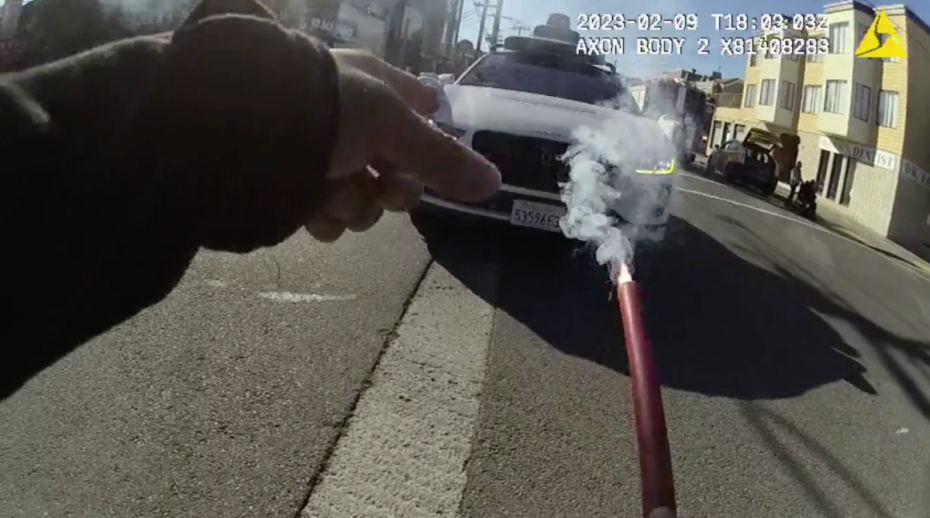
- On June 12, a fire engine was backing up on Lincoln Avenue near 25th Avenue. While human drivers stopped for the truck, “a Cruise self-driving car failed to yield, and was heading directly toward the officer.” A firefighter giving directions to the fire truck as it backed up was forced to move to “avoid being struck” by the driverless car. “Without the direction of that backer, Engine 18 struck a non-occupied parked car, parked on Lincoln Way.”
- On July 14, a Cruise blocked a fire truck at Post and Larkin streets, approaching a burning, “fully occupied apartment building.” The Cruise “was blocking either of the two possible aerial ladder placements available to Truck 5. Truck 5 stopped and waited for 30 seconds but the Cruise vehicle did not move.”
- On July 26, a firefighter working a blaze at 18th Avenue and Balboa Street reported a Cruise vehicle stopping “right next to” their engine and staying there for “approximately 30 minutes.”
- On July 28, firefighters at Station 5 at Webster and Turk streets were unnerved by a Cruise vehicle that drove dangerously close to their fire truck. “In the name of safety … a cone was placed on the hood of the Cruise vehicle,” reads the report. While the Cruise representative told firefighters to remove the cone so the autonomous vehicle could be moved remotely, the firefighter chose not to. “I opted to leave the cone on the hood of the Cruise vehicle until a live person was present to move the vehicle.”
- On Aug. 5 at the Legion of Honor, a Waymo parked itself between a fire truck and a burning car. “This action impacted our suppression efforts negatively, due to members having to walk around the Waymo with a charged hose line and fight active fire,” reads the report. “The car was positioned between the car on fire and the fire engine.”

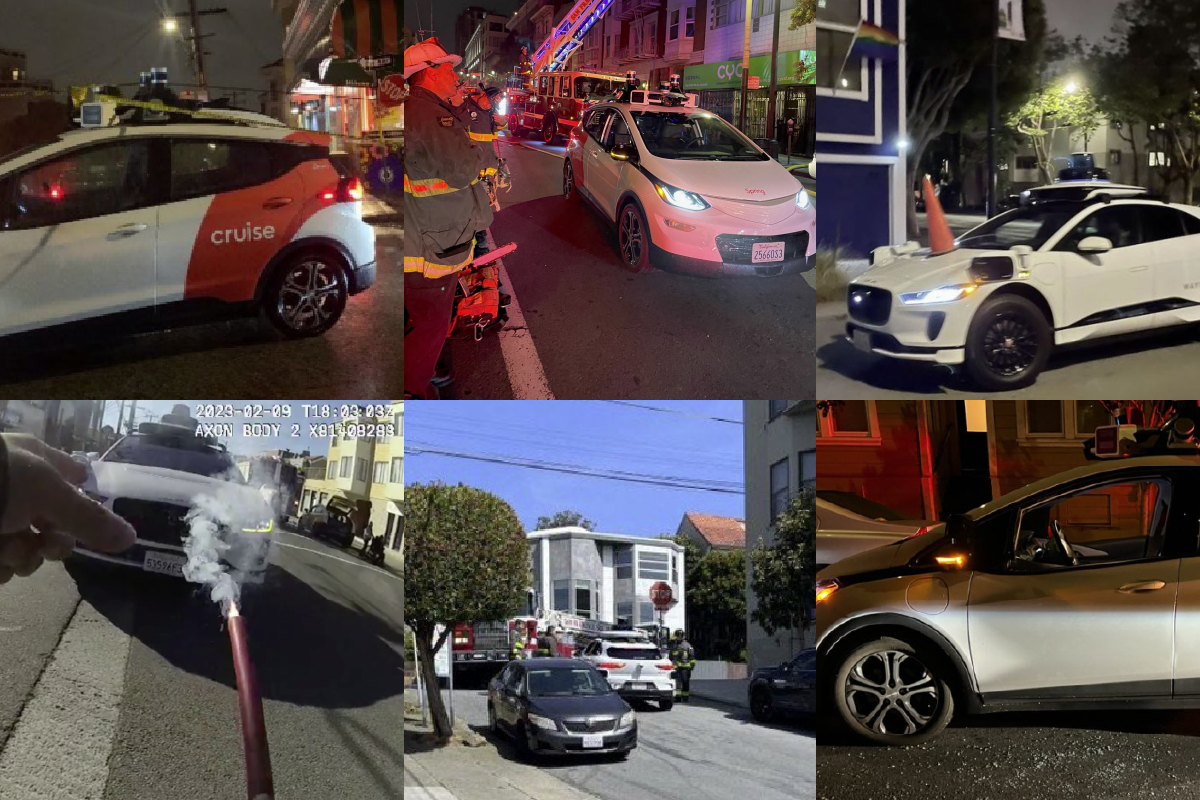
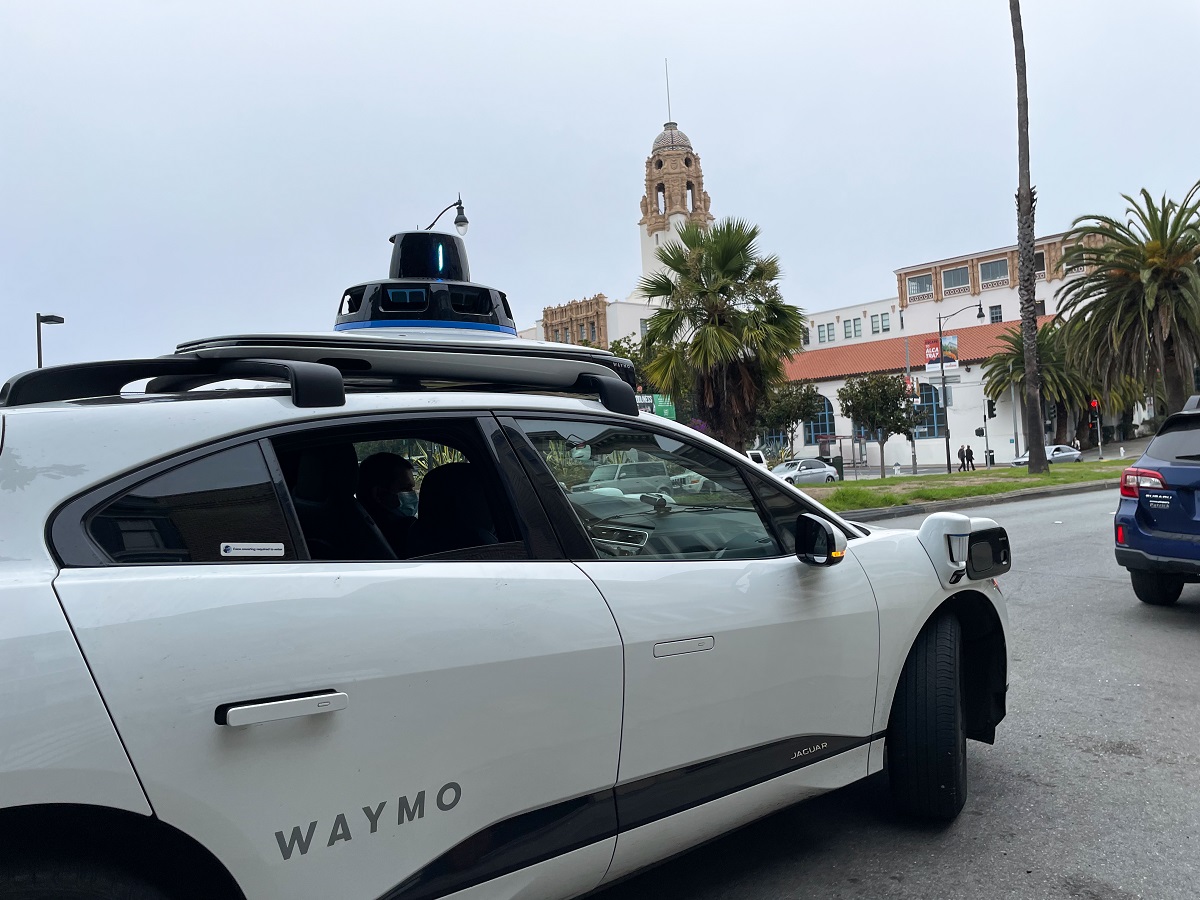

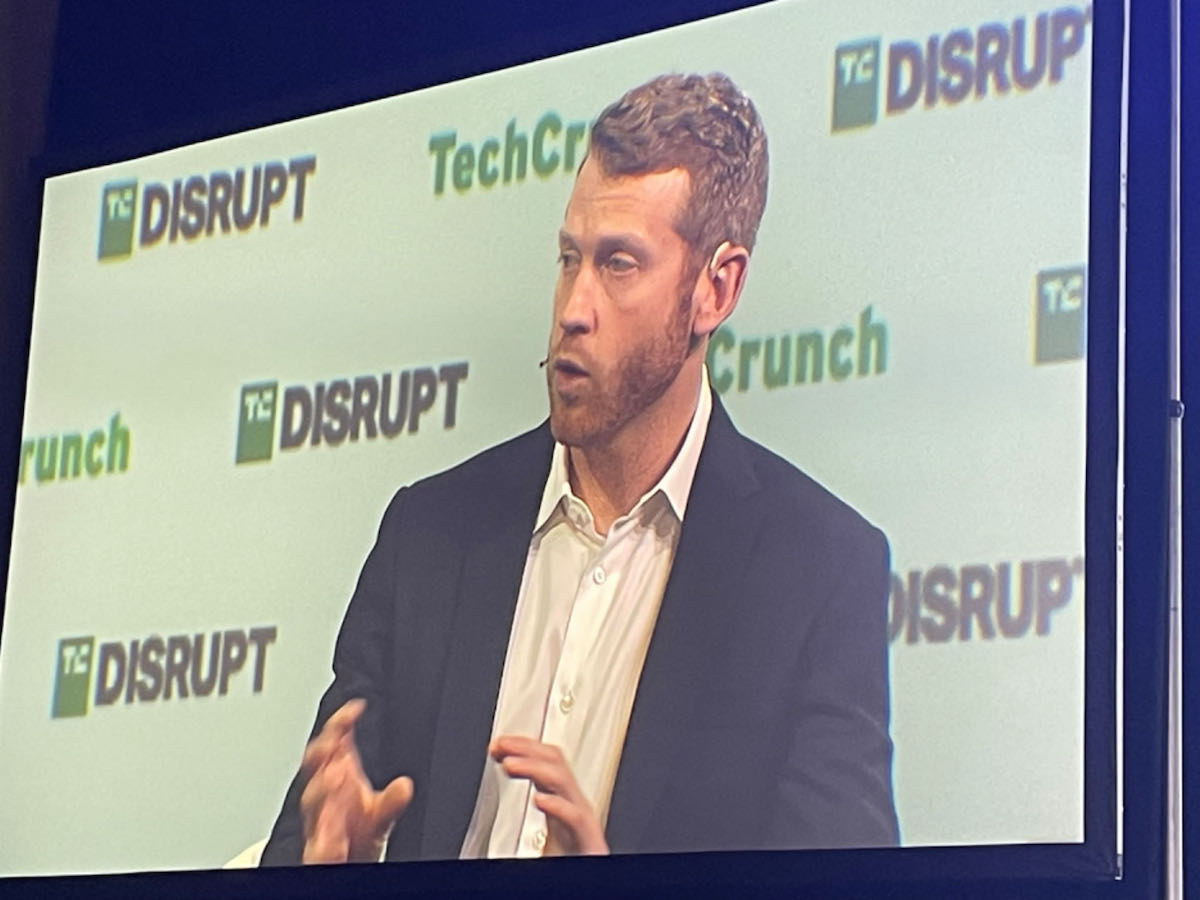

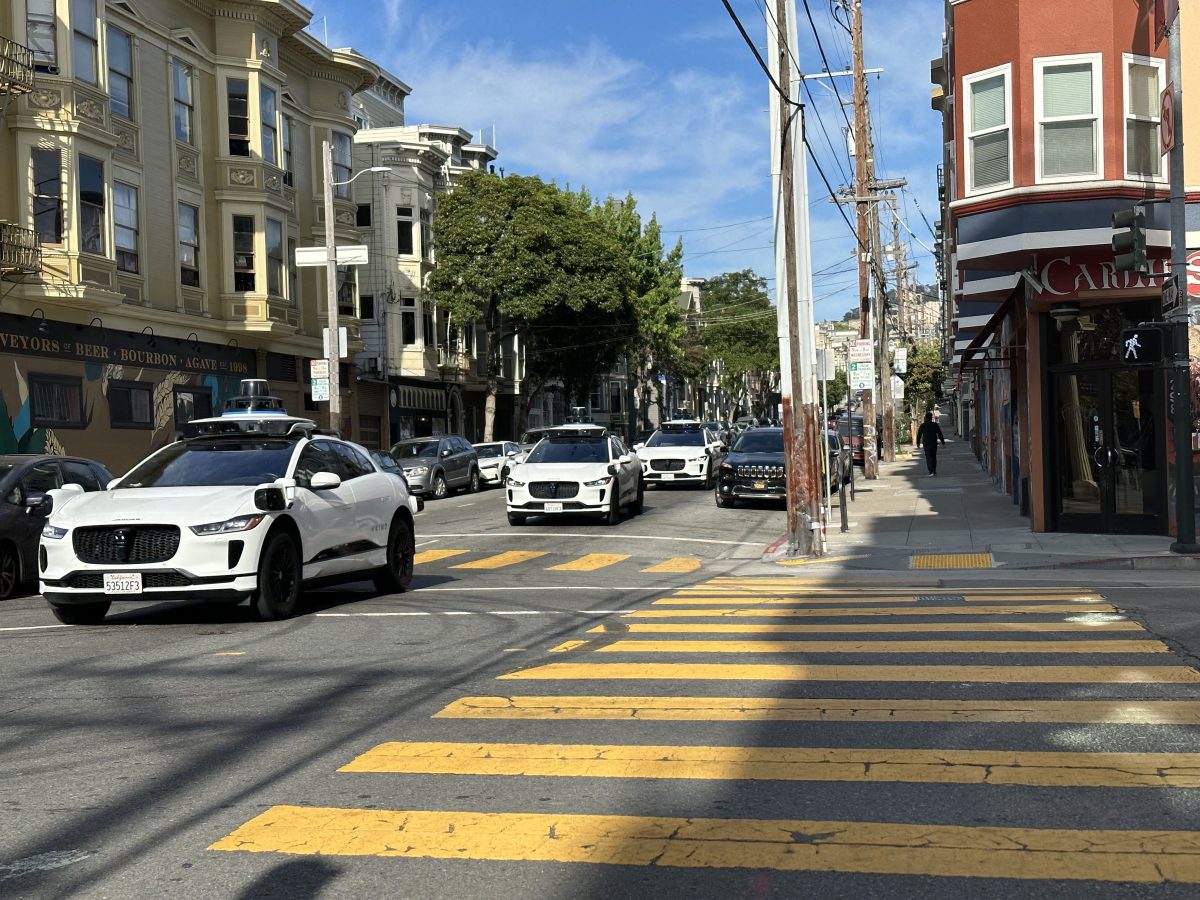

Thank you to ML for pushing this issue. Many people in the autonomous vehicle industry are hyping these vehicles as the answer to a lot of safety and congestion problems. I’m pretty skeptical of those claims. Regardless, it is clear that there are many troubling flaws with the technology that have yet to be sorted out. Also troubling is the less than transparent manner in which they have been approved to operate in the city and are being introduced to city streets.
They are still hyping how they can fix all of our problems with their clever little incel brains and coding, huh?
Well, this may all be a fate accompli if the autonomous car companies have paid off the right people. They even have former mayor Willie Brown on the payroll. The opinions of everyday San Franciscans do not matter if the right people in La City Familia are taken care of. Article on Willie Brown’s involvement with automated car companies: https://www.sfgate.com/politics/article/willie-brown-statement-cruise-advisor-18283909.php
In all of these cases no mention is made of any humans on board as passengers. How would a passenger deal with being driven around in a recalcitrant robotaxi? Would the passenger be able to take over the car and drive it? Get out of the car? Why not just allow the passenger ride in the drivers seat and take control of the car when control is needed?
Sir or madam —
If you go through the actual reports, there are passengers mentioned and they tend to get out and walk away. Neither the passengers nor the firefighters can take control of the cars on their own initiative.
JE
Thanks for the info. I guess. I missed that. Here is a question re: records kept by SF officials and the corporate data banks that reside with the AVs. Has anyone compared incident reports you published taken by SF authorities with those in the corporate database? Do they agree on the facts of each incident? If they do, we can be someone reassured. If they do not, there is a huge problem that needs to be addressed.
I think it’s notable that the passengers just get out and walk away during these encounters.
Imagine for a moment a hypothetical in which these autonomous vehicles were in widespread use during the 1989 Loma Prieta earthquake. Imagine thousands of empty cars clogging the roadways throughout the Bay Area, abandoned by their fares.
Cruise and Waymo decision-makers now seem to be acting as if letting their robotaxis interfere with police and/or fire emergencies is simply the cost of doing business. Will it take somebody suing Cruise or Waymo for a lot of money for losing a house or a loved one to fire services delayed by their robocrap vehicles to get them to change their cavalier ways?
Can’t wait to see the map of people hurt or killed by human drivers during this period. That’s coming next, right? right?
I would not ever use a driverless vehicle ride. Besides taking away a job from a person, they are not necessary. We have taxis, Ubers, Lyfts, etc. I can’t understand why on earth we would need these vehicles. I guess the parent companies needed a way to make more money.
This is a deeper problem. It seems obvious the unpredictable nature of emergency response teams makes programming the cars to understand the situation very difficult. I had a job directing traffic for a venue and when paramedics would arrive, I’d try to get them to park in the best place possible for continuously flow but, yeah, that never happened. They were there to save people, not worry about blocking parked cars. But as one gets out of the city – where stop signs and traffic lights at nearly every corner make for easy programming – understanding even more unique situations will be necessary. I’m betting the cars ultimately wind up being useful in limited areas only.
Not sure if the incident I reported to ML reporter on Jan 13th made it into this data. Would be happy to resent video/
How is it that these autonomous cars do not have some kind of safety that can be activated easily or even automatically, by emergency responders? It’s so simple and should have been one of the first things they put together before sending them out onto the public streets.
Do these cars cause more or less human injuries and deaths than human-driven vehicles – proportionally speaking. If we knew that number, there would be a clearer picture of whether they should be allowed to proceed.